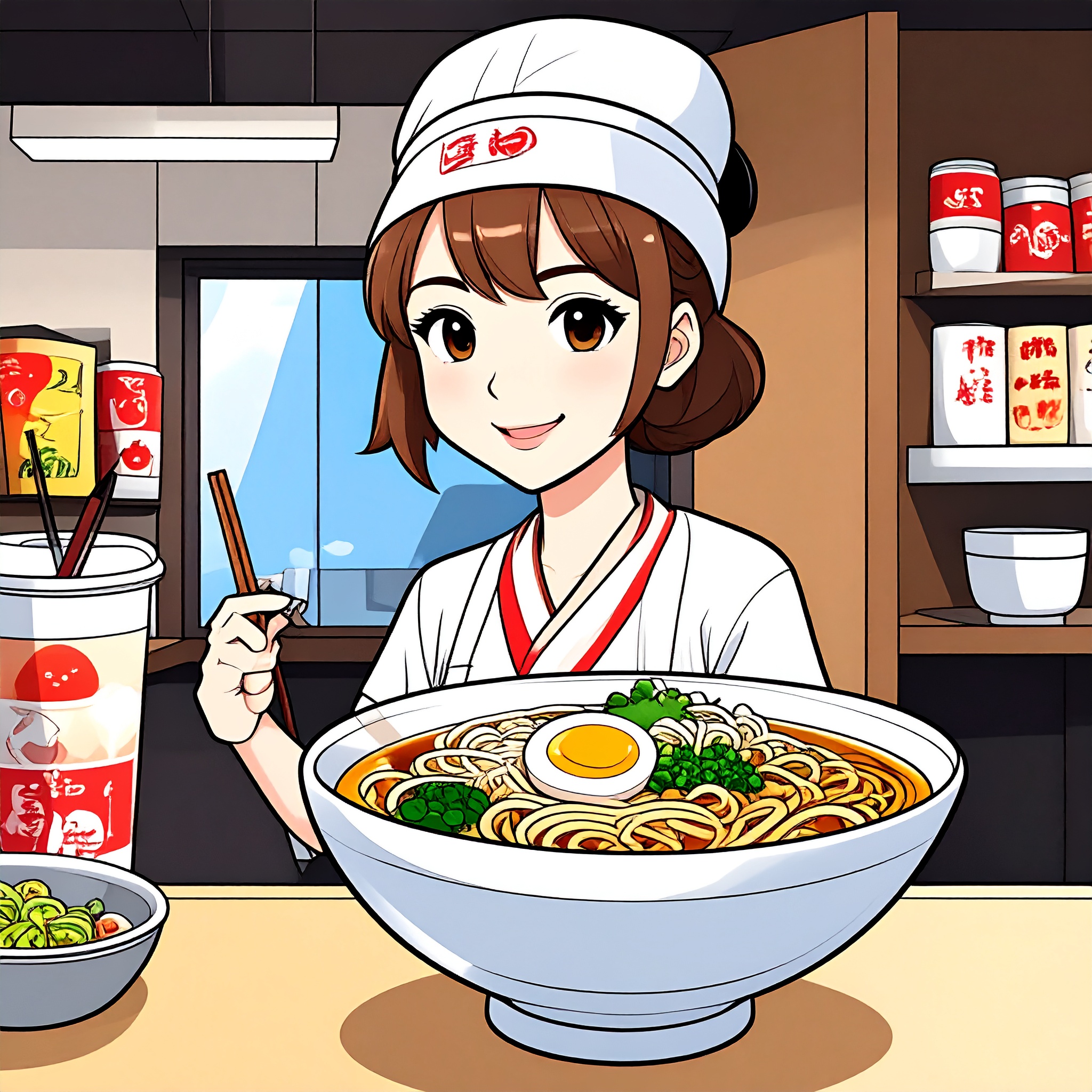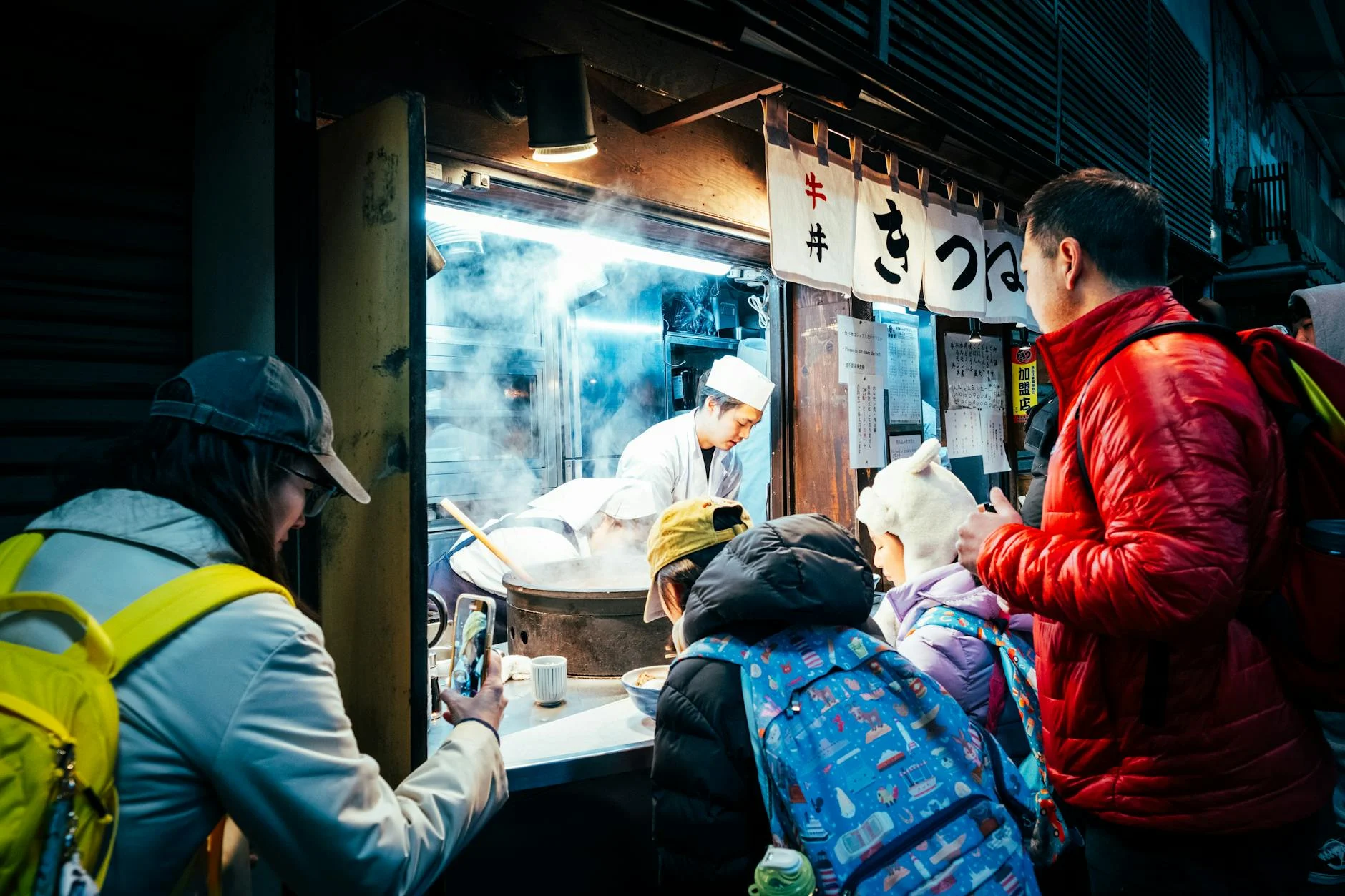Rising from the bowl, the steam carries layers of aroma, umami, warmth, and memory. Though ramen is a beloved staple across Japan—a true national comfort—it is also an intensely personal canvas, where the individuality of the chef is most vividly expressed. At the heart of this expression lies the broth. So central is the soup that the noodles, toppings, and even the bowl itself can become supporting characters to its leading role.
Behind every bowl of ramen is an intricate process—hours, even days, of effort, experience, and unrelenting passion. The broth serves as the foundation of flavor and, more profoundly, as a liquid embodiment of the chef’s philosophy. Whether made from pork bones, chicken carcasses, dried sardines, kombu, vegetables, smoked fish flakes, or shellfish—each ingredient is chosen with purpose, and the combinations are as diverse as the chefs themselves. The broth is simmered, strained, rested. Every step is calibrated with unwavering precision as the craftsman seeks, drop by drop, the ideal.
These artisans do not merely follow recipes—they respond. To the day’s temperature and humidity. To the condition of the water and raw ingredients. They adjust heat, timing, and extraction with intuition honed over years. They examine the broth’s hue, clarity, viscosity, the distribution of oil on its surface—drawing on sight, scent, and taste to complete the final work. This is not factory production. This is human calculation—subtle, sensory, and exacting.

In the realm of ramen broth, mastery often lies not in addition, but in subtraction. While it may be relatively simple to intensify flavor through complexity, it requires a far more refined skill to strip away the unnecessary and allow each ingredient’s essence to emerge with clarity. In a pork bone broth, for example, achieving richness and creaminess without the accompanying heaviness or odor demands attention not only to simmering technique, but to the precise cutting of bones and careful purging of impurities. In seafood-based broths, maintaining fragrance while building depth hinges on exacting temperature control and precise timing of extraction.
Today’s ramen broths are continually evolving—layered double stocks combining animal and plant elements, delicate unions of shellfish and dried ingredients, and sophisticated pairings with shio or shoyu-based tare sauces. At the forefront of this evolution are chefs who draw freely from the worlds of classical Japanese dashi, French sauce theory, and Chinese soup craftsmanship. Their work is a quiet testament to cross-disciplinary excellence, where tradition and innovation harmonize in a single bowl.
Broth is not only a medium of flavor—it is a vessel of memory. For one person, it may evoke the taste of childhood, a local bowl once savored after school. For another, it recalls a chance encounter on a distant journey. For a chef, it carries the weight of discipline—hundreds of iterations, perfected over years of training. Each bowl holds time, distilled into aroma and warmth, whispering stories of where one has been and who one has become.
For ramen artisans, the act of making broth is also a form of introspection. Even when preparing dozens or hundreds of servings in a day, each bowl is a mirror—a reflection of “who I am today.” Fatigue, clarity, hesitation, or calm—all subtly manifest in the final taste. In this way, the oft-repeated phrase “soul in a bowl” is no exaggeration. It is a quiet truth lived daily by those who dedicate themselves to this craft.

The allure of ramen lies in the accessibility of its profound philosophy. For the price of a few hundred yen—or a few thousand—anyone can step into the world of culinary craftsmanship. Across the counter, one hears the bubbling of stockpots, feels the warmth of rising steam, and reaches for a bowl presented with quiet reverence. This moment is a silent dialogue between chef and diner—a modest ritual that nourishes not only the body, but the spirit.
Ramen broth also holds the potential to transcend borders. In recent years, authentic ramen establishments have flourished across the globe, each cultivating its own interpretation of the form. At the heart of these international renditions lies the Japanese understanding of umami and dashi—rooted in fermented, dried, and sea-derived ingredients that are now celebrated by chefs worldwide. This is no fleeting trend, but a cultural transmission through soup: an expression of Japanese technique and sensibility influencing the broader world of gastronomy.
Ramen is at once a daily comfort and a culinary art. At its core is the broth—a product not just of ingredients, but of dialogue with fire, water, time, and memory. It is where precision meets intuition, and where craftsmanship becomes something soulful. Soul in a bowl—this phrase continues to resonate, reminding us that true mastery lies in the quiet, persistent pursuit of depth.




